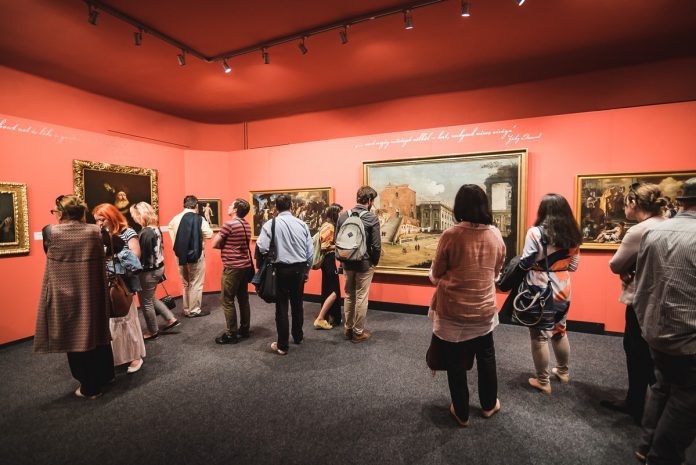The Mures County Museum’s Ethnography and Folk Art Department holds an impressive collection of men’s folk wear ornaments from the Calimani highland area, the richest and most valuable of this kind in Romania, consisting of almost 400 circular openwork belt fittings called ‘prâsnel’ in the traditional vernacular language, girdle ornamental crosses and groom’s rings, write Agerpres.
These nearly 400 items make up one of the most substantial collections of the 117 kept by the Targu Mures museum. These heritage-grade ornaments were purchased, starting in 1920, by the founder of the first museum in Targu Mures, Aurel Filimon (1891-1946), and are recorded in the museum’s treasure trove database.
Researcher Aurelia Diaconescu intensively studied the collection of the Targu Mures Museum of Ethnography and her study ‘Openwork belt fittings (‘prâsnele’) in the men’s folk wear specific to the Calimani highland area kept in the Mures ethnographic collections’ provides extremely many details about the shape, symbolism and importance of these conchos.
They have a circular shape, a diameter of 3-5 centimeters and are worn over the girder, in one or two strings, each of which consists of 10, 15 or 20 pieces strung on leather laces.
„These Romanian folk ornaments reveal the mastery with which the peasant craftsman harmoniously combined technique and material in order to create beautiful and representative objects. They are bronze- or brass-cast. Although apparently simple, metal casting required special knowledge from the craftsman, for him to notice the moment when the metal reached the required fluidity. Various techniques and methods were used for finishing, such as hammering, chiseling, engraving, stamping, filing, piercing to obtain the holes through which the leather lace was strung. A combination of techniques was used in general in order to enhance the material, shape and decoration to produce a unitary whole,” Aurelia Diaconescu writes in her study.
18th and 19th century openwork belt fittings are very well defined from an artistic point of view, which leads to the conclusion that the folk craftsmen had gathered experience in producing such ornaments, perhaps „even in centuries of practice”.
„It is possible that originally the ‘prâsnele’ had a magical significance of ancient origin, related to the worship of the Sun. (…) Their decoration is based on the ornamental motif of the dot and the circle that symbolize regeneration through perpetual motion. Curved or straight lines are sometimes grouped to create rosettes or rhombuses. The image of the tree of life – as an extant archaic element of the solar cult – is frequently featured as the central motif around which the rest of the ornaments are arranged. (…) The autochthonous cult of the Sun has preserved its archaic background that took shape here before the migrations,” says Aurelia Diaconescu.
The researcher notes that a man’s costume from the Calimani area consists of a fur cap or hat, shirt, woolen cloth trousers, leather girdle, lace-up leather footwear or boots, to which elements specific to Marginimea Sibiului added later (small hat, gusset shirt), but also from the Nasaud area, such as the tassel vest. The outfit is complemented by the black or brown long cloth coat with gussets and a straight collar, with white embroidery placed at the gusset seams and at the hems.
The leather girdle is still an indispensable item of the men’s wardrobe, and is widespread in the Calimani area; it is 20-25 centimeters wide, with two or four metal buckles featured as ornaments.
Initially, the girdle had the role of keeping tight the waist during hard work that required a man to lift heavy weights; the girdle also has an outer pocket and one or two inner pockets.
„Due to its functional robustness, the girdle symbolizes strength and virility, the ability of the wearer to carry out hard and dangerous work in the forest. It is also considered a sign of physical vigor. Over time it became an essential decorative piece of clothing. The border decoration consists of stamped geometric motifs (wolf’s tooth, meander line) and the central decoration is made of geometric or floral motifs embroidered with colored felt strips. (…) In addition to the openwork belt fittings, the girdles were also decorated with metal studs,” the cited document notes.
In addition to the openwork belt fittings, the ornaments used to decorate the men’s wear specific to the Calimani mountain region also include the groom’s rings, and crosses for embellishing the belt pockets. A hatchet or a brass hammer, as well as a knife with metal sheath and chain were usually attached to the girdle.
„It is certain that we cannot talk about ornaments without seeking for links to their ancient and feudal predecessors, themselves being the vectors of ancient elements that can be traced back to the origins of human civilization. This was also the intuition of Aurel Filimon, who attached special attention to the research of the openwork belt fittings, making use of his qualities as an ethnographer and equally as an archaeologist. Therefore, he calls the ‘prâsnele’ from Calimani ‘Dacian vestiges’ and concludes that the Calimani locals live in a present (the interwar period – Ed. note) ‘which even today preserves the reminiscences of the Bronze Age in such traditional holiness, as if we saw the life of those times unfolding before our very eyes’,” says Aurelia Diaconescu.
Aurel Filimon is the one who succeeded in opening a permanent ethnographic exhibition in Targu Mures, starting on April 22, 1934. Pictured among the first photographs of the Calimani area men’s folk garb preserved at the Targu Mures Museum of Ethnography is Aurel Filimon himself, dressed in a traditional costume. The photo was taken when he won the first place at the Bucharest Exhibition-Fair organized by the Romanian Women’s National League, in 1937.
Aurel Filimon acquired the first ethnographic items in the collections of the Mures County Museum’s Ethnography and Folk Art Department at the beginning of the 20th century; the ‘Aurel Filimon’ fund counts more than 1,500 ethnographic items purchased between 1918 and 1940.




